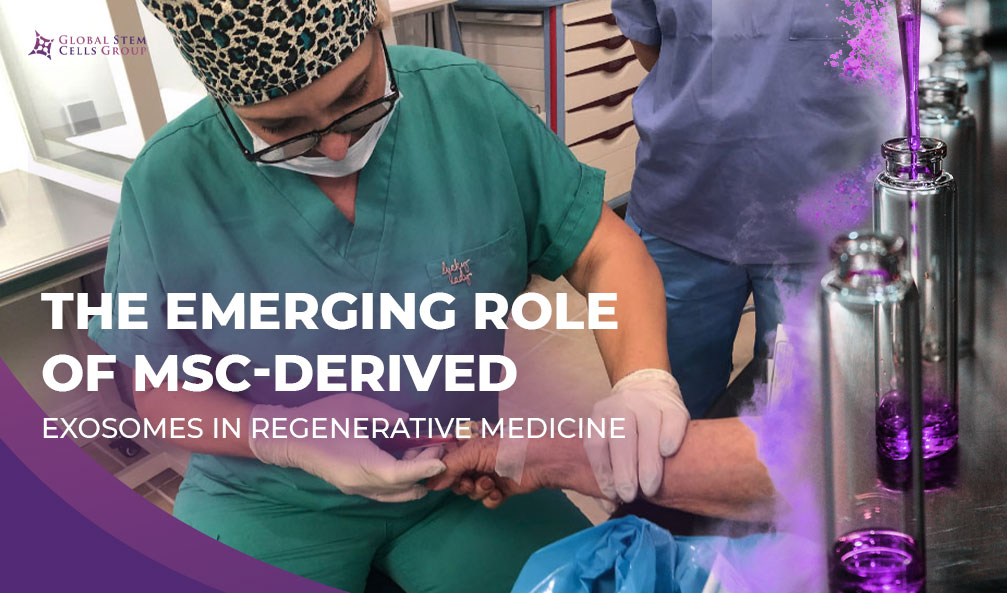
In recent years, MSCs have been introduced as respectable candidates for regenerative medicine due to their pro-angiogenic, anti-apoptotic, and immunomodulatory attributes. A variety of human tissues can be used as a source of mesenchymal stem/stromal cells (MSCs), ranging from bone marrow (BM) to umbilical cord (UC). These cells are typically multipotent and can differentiate into a variety of cell types. MSCs have been studied extensively for potential applications in cardiomyopathy, neurodegenerative disorders, spinal cord injuries (SCI), kidney injuries, liver injuries, lung injuries, and even cancer. According to current research, MSC-derived extracellular vesicles (EVs) contribute to MSC-exerted therapeutic benefits.
As defined by the International Society for Extracellular Vesicles (ISEV), EVs are lipid bilayer particles secreted by cells that do not replicate. EVs can be categorised into three subclasses based on size and biogenesis procedures: surrounding exosomes (50-150 nm), microvesicles (MVs) (100-1000 nm), and apoptotic bodies (ApoBDs) (500-5000 nm). In order for exosomes to be produced, multiple steps must occur; endosomes must be created from the plasma membrane, intraluminal vesicles must be formed within multivesicular bodies by inward budding, the MVB must merge with the plasma membrane, and finally the internal vesicles must be released.
By transmitting their molecules, such as proteins, messenger RNA (mRNA), and microRNAs (miRNAs), MSC exosomes stimulate phenotypic changes and subsequently modify regenerative programs of target organs. A number of mechanisms are involved in phenotypic alterations, including prevention of apoptosis, cell proliferation, immunomodulatory reactions, attenuation of oxidative stress, and improving oxygen supply to recipient cells. By supporting mitochondrial transfer, MSC-exosomes can suppress inflammatory cytokine production and induce phenotype 2 alveolar macrophages (M2), leading to acute lung injury (ALI) rescue. It has been demonstrated that the transmission of miRNAs from MSC-exosomes to recipient cells is responsible for the restoration of damaged kidneys, hearts, livers, and brains
Various cells continuously form and secrete exosomes, including lymphocytes, platelets, mast cells, intestinal epithelium, dendritic cells, neoplastic cell lines, microglia, neurons, and MSCs. Studies have shown that exosomes play an important role in cell-to-cell communication as well as several physiological and pathological processes. Despite their inherent biological activities, exosomes have recently been introduced as encouraging drug carriers because of their small size, high biocompatibility, and ability to hold different therapeutic ingredients, including proteins, nucleic acids, and small molecules. There have been reports showing the usefulness of MSCs-exosomes for treating a variety of ailments, such as lung, kidney, liver, neurodegenerative, cardiac, and musculoskeletal diseases, as well as skin wounds in vivo.
As well as their remarkable therapeutic effects, MSC-EVs derived from diverse sources also possess a variety of physiological functions that may affect their therapeutic application. In a wide range of human disorders, MSC-exosomes are considered an effective alternative to whole-cell therapy because of their low immunogenicity and improved safety profile. Although MSC-exosome applications still face various challenges, their benefits and capabilities are attracting increasing interest.
To learn more about exosomes and their clinical applications or if you’re interested in boosting your clinical practice with exosomes, go to our website www.cellgenic.com



